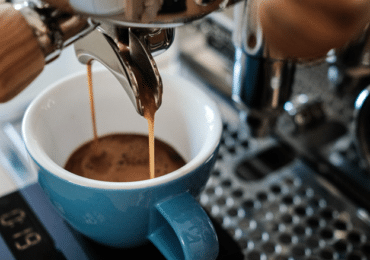For many of us, coffee is not just a beverage; it’s a ritual, a moment of solace, or a kick-start to our day. The process of brewing coffee, however, is as diverse as the drinker’s tastes, and the methodology used can significantly impact the final flavor profile. This guide seeks to delve into the intricacies of brewing methods, from the classic French press to the modern Aeropress, and even the intricate siphon method. Our aim is to uncover the essence of each method and help you discover the joy of brewing the perfect cup of coffee. Whether you’re a seasoned barista or a beginner exploring the realms of coffee, we promise you a journey full of aroma and flavor. Let’s embark on this caffeinated adventure together and unlock the secrets to coffee brewing excellence.

The Classic French Press Method
The French press, also known as a press pot or plunger pot, is a time-honored method of brewing coffee, lauded for its simplicity and ability to extract full-bodied flavors from the beans. It involves steeping coffee grounds in hot water and then separating the grounds from the water with a mesh metal filter. The result is a coffee that retains its essential oils and sediment, giving a robust and flavorful cup. One of the critical aspects of mastering the French Press method is to ensure the right coffee-to-water ratio and a precise brewing time. Perfecting these elements can lead to a coffee experience like no other.
On the other hand, the French Press method can also produce a bitter cup of coffee if certain aspects are not done correctly. Grinding the beans too coarsely or using too many coffee grounds can lead to over-extraction, resulting in an overly acidic flavor. You want to ensure that the grounds are not left steeped for too long, as this can also lead to an unenjoyable drink.
The History and Evolution of Coffee Brewing
In recent years, we’ve seen a surge in innovative methods of brewing coffee. Different brands have come up with their own variations, and this has resulted in a variety of coffee experiences. Namely, when taking a journey through time, we can see the three waves of coffee that have taken the world by storm. The first one covers the period from the 1800s to the 1960s, and it is characterized by production, convenience, and accessibility. The second covers the period from the 1960s to the early 2000s, and it is marked by the focus on high-quality coffee and unique brewing methods.
The last, third wave, which started in the late 1990s or early 2000s came as a reaction to mass production and low-quality coffee. It is characterized by quality and sustainability, with an emphasis on ethical practices and craftsmanship. What will the fourth wave of coffee bring? We will have to wait and see.
The Modern Aeropress Method

The Aeropress method is a relative newcomer in the coffee brewing scene but has quickly gained popularity due to its portability and the smooth, rich coffee it produces. Invented by Alan Adler in 2005, the Aeropress combines elements of the French press and espresso brewing methods. Coffee is steeped for a short period before being forced through a filter by pressing the plunger through the tube. The result is a concentrate that can be enjoyed as is or diluted with hot water. The Aeropress shines in its speed and simplicity, making it an excellent option for coffee lovers on the go. It’s also incredibly versatile, allowing for experimentation with brewing times, coffee-to-water ratios, and even the grind size.
The Intricate Siphon Method
The siphon (or syphon) method, often seen as the most complex and theatrical way to brew coffee, dates back to the 1830s. It combines infusion and vacuum brewing to produce coffee that’s extraordinarily clean and flavorful.
This method requires two chambers where vapor pressure and vacuum produce coffee. As the water heats in the lower chamber, it’s forced up into the upper chamber containing the coffee grounds. Once the heat is reduced, a vacuum is created, and the brewed coffee rushes back down into the lower chamber. This method demands precision and care, but the reward is a fascinating process and a cup of coffee that truly highlights the delicate characteristics of your beans.
The Compact Espresso Method

Espresso, often considered the heart and soul of the coffee world, is a method that uses pressure to force hot water through finely ground coffee. Invented in Italy in the early 20th century, the espresso method revolutionized the coffee industry by reducing brewing time and intensifying the final flavor. The method’s name originates from the Italian word “esprimere,” which means “to express” — fitting, as espresso is coffee in its most concentrated and pure form. Due to its robust flavor and thick, creamy texture, espresso serves as the base for many popular coffee drinks like lattes, cappuccinos, and Americanos. Espresso machines today range from simple stovetop models to advanced machines with built-in grinders and milk frothers. Despite the complexity and cost of some machines, the art of making espresso has enchanted many coffee enthusiasts, making it an enduring and beloved method of brewing.
The Cold Brew Method for a Refreshing Twist
Cold brew coffee is a trendy method synonymous with a smooth, mellow flavor profile that’s often less acidic than its hot counterparts. The cold brew process involves steeping coarse-ground coffee in cold water for an extended period, typically 12 to 24 hours. The coffee is then filtered to remove the grounds, resulting in a coffee concentrate that can be diluted with water or milk and served over ice. The slow extraction process gives cold brew its distinctive taste, bringing out the coffee’s natural sweetness and reducing bitterness. This brewing method is perfect for those hot summer days when you want a refreshing, caffeinated pick-me-up that’s easy on the stomach.
From the timeless charm of the French Press to the modern simplicity of the Aeropress, from the intricate drama of the Siphon method to the robust intensity of Espresso, and the refreshing twist of Cold Brew, every coffee brewing method has its unique allure. Each method reveals new dimensions of taste, aroma, and experience. As we look forward to the anticipated fourth wave of coffee culture, one thing is certain: the journey of coffee brewing is an ongoing exploration of innovation and tradition, of science and art. So venture on, fellow coffee enthusiasts. Continue to experiment, savor, and celebrate the endless flavors and possibilities that coffee has to offer. Here’s to the perfect cup, every time.

